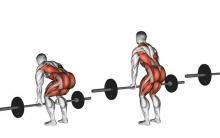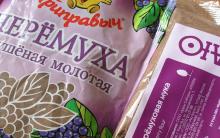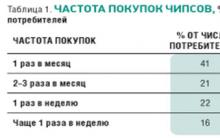I understand why Americans live richly, and why they drive super-cheap gasoline at 45 rubles per liter. We saw their public debt. I understand why the Japanese live richly. My friends who work in Japanese mode (14 hours a day) also live well. I understand why the Germans live richly. Responsibility and professionalism, multiplied by law-abidingness, give a real effect, especially on a national scale.
I understand why the carefree French live well - they received assistance from the United States under the Marshall Plan. True, they accounted for only 2.5 billion dollars, which could hardly seriously affect the economic situation in the country ... however, formally, we can still refer to the Marshall Plan.
I do not understand one thing. Why do our Finns live richly?
Now, of course, between us and the Finns there is no longer such an abyss as in the eighties and nineties: an ordinary Finn does not feel like a millionaire in St. Petersburg, and an ordinary St. Petersburg resident does not feel like a student in Finland accidentally looking into an expensive restaurant. Nevertheless, the Finns, even now, after our recovery zero and ten, live visibly richer than us.
I have heard several versions of the Finnish success story.
The version that the Finns are somehow fundamentally different from us does not stand up to scrutiny. A few centuries ago, statehood among the Finns was not particularly developed, and in 1809, following the results of the Russian-Swedish war, Finland became part of Russia, where it remained until 1917.
In the 20th century, not the most beautiful pages of history begin: Finnish troops tried to chop off Karelia from Soviet Russia, then the “winter” war began ... but this is not about that now. For our analysis, it is enough to note that Finland was actually part of the Russian Empire for quite a long time, and that it approached the Revolution in approximately the same position as we did. Quoting from a comment on a recent post:
According to the 1897 census, the proportion of literate people of both sexes in the Russian Empire without Finland was 21.1% ... According to Finnish data in 1890, 21.1% could read and write,
Personally, I had quite a lot of contact with the Finns in the early 2000s, and I can testify that the Finns are still very much like us. Two arms, two legs, head. I did not notice any Japanese love for work or German respect for the law in our neighbors.
Another popular version concerns the favorable geographical position of Finland. It is assumed that Finland worked after the War as a trade gate of the USSR, thus fattening on goods passing through it.
This version does not seem convincing to me - at least for the reason that Sweden lives even richer than Finland, although the USSR did not trade through it. Again, a significant part of the trade flow of the Union went through the Baltics, but the Baltics did not get rich - despite the fact that the Soviet government built power plants and other important infrastructure in it:
The very existence of the Baltic States refutes another version, according to which the whole secret of Finland lies in a small size. Yes, I agree, the smaller the size, the easier it is to put things in order, but the Finns not only have more order, but also more money, and this was the case a few decades ago.
Here, for example, data on construction. Back in the 1970s, the Finns built 0.7 square meters per person per year - one and a half times more than the Soviet Union and modern Russia ever managed:
Other versions can be briefly reviewed. Finland's national debt is quite moderate. It's ridiculous for us who survived the nineties to hear about the benefits of free trade with the West. The Finns have natural resources, but they are quite moderate, there are not as many of them as in Norway, for example.
In general, I'm at a loss. If you have your own version, please write about it in the comments. It will be very interesting to read.
Be proud, Finland: you are officially recognized as the happiest country in the world!
This is evidenced by the World Happiness Report released in March, in which the Scandinavian country climbed to first place from fifth last year.
What is so special about her?
According to this indicator, Finland is ahead of only one country in the world - Sweden.
6. And 188,000 lakes, including the second largest in Western Europe.
Not the first - this honor is known to belong to Lake Vänern in Sweden. But with an area of 4,380 km², Lake Saimaa is still huge - certainly the largest in all of Finland.
Saimaa seals live here, although it is a great success to see this endangered freshwater animal. There are only 320 of them left, and they are not found anywhere else. But you can take binoculars and try. The easiest way to get to the lake is through the small town of Lappeenranta, located 225 km northeast of Helsinki.
7. This is a tolerant place.
According to the Prosperity Index, which ranks countries on a range of criteria, including personal freedom, based on access to legal rights, freedom of speech, religious and social tolerance, Finland is the 9th most tolerant country in the world. For comparison: Ukraine - 95th, Belarus - 133rd, Russia - 143rd.
8. With enviable gender equality.
Perhaps the above explains the fact that Finland is one of the leaders in gender equality on the planet. In the World Economic Forum's Global Gender Gap Index, Finland ranks third, behind only Iceland (1st) and Norway (2nd).
9. Santa Claus lives here.
 AFP/MARTTI KAINULAINEN
AFP/MARTTI KAINULAINEN Tolerance and equality are great, but there is also Santa Claus in Finland! He lives, of course, in Lapland, where he can be visited at any time of the year.
Perhaps Lapland is the real Finland: a pristine area where nomadic Sami people and their deer live. In summer, there are chic hiking trails and rafting on rough rivers. In winter, you can ski, go ice fishing, drive along forest trails on a snowmobile, and even ride a husky-drawn sleigh.
10. They love delicious coffee here.
As you can see, the Finns are a very progressive people, but their virtues do not end there. More importantly, they consume more coffee than any other country in the world: 12 kg per capita per year, a whopping 2.1 kg more than second place Norway.
11. And get naked in saunas.
Do you want to show off naked in public? You won't understand Finnish life until you visit saunas! In Finland there are 5.4 million people and 3 million saunas - Finns are so obsessed with public washing.
The Yrjönkatu sauna complex in Helsinki is housed in a classic modernist building from the 1920s. And in the lakeside town of Kuopio, the Jätkänkämppä recreation center has the world's largest smoke sauna; we will not be surprised if a folklore ensemble of accordionists performs there.
12. There is excellent Wi-Fi.
Have you ever wondered which countries have the fastest internet? Of course it was, and of course, Finland is in the top ten.
The map above shows the average connection speed in Mbps according to Akamai, a data network serving 15% to 30% of all Internet traffic in the world.
13. And the most beautiful northern lights in the world.
 Reuters
Reuters Finland is one of the best places in the world to see the northern lights. Of course, don't come here ONLY for the aurora because you'll be disappointed, but if you happen to be in Finland during the winter months, chances are you'll be lucky enough to see these amazing celestial special effects.
14. Helsinki has one of the most beautiful cathedrals in the world…
St. Nicholas Cathedral - a white-stone miracle of neoclassicism, crowned with green domes - is located in the heart of the Finnish capital. It was built in 1830-1852 to please Tsar Nicholas I, but instead of the pomposity typical of Russian churches, it is distinguished by lightness and grace.
The cathedral looks huge from the outside, hanging over the Senate Square with its bulk, but inside it seems rather cramped - although it can accommodate 1,300 parishioners.
15. …and surprisingly good beaches.
True, not in the center, where there is only a port area. But look around and you will find that there are quite a few sandy beaches tucked into the Baltic Sea. One of them is located 15 km to the east in Aurinkolahti.
The name of this suburban area, meaning "sunny bay", was recently given to replace the old Mustalahti ("black bay") for promotional purposes to attract new residents. But this does not detract from the breadth of the local beach! And the new name of the area justifies it - at least in July and August, when the temperature in Helsinki rises to 21 ° C, and the sea heats up to an almost tolerable 16 ° C.
16. Here you can move in time.
No, this is not a joke! The border between Finland and Sweden also separates the two time zones. Finland is two hours ahead of Greenwich, while Sweden is only an hour ahead. So if you cross the border from east to west, you will "return" to yourself as much as 60 minutes of life - it's cool to do this on December 31st to celebrate the New Year twice.
One of the best places to travel back in time is the village of Karesuvanto in Finnish Lapland, located on the banks of the Muonio River exactly opposite its Swedish neighbor Karesuando. Cross the bridge from one side to the other - and feel like Alisa Selezneva!
17. Or watch bears.
 Mikko Hyvarinen
Mikko Hyvarinen Telegraph Travel journalist Hazel Plush did just that this year. She says:
“I thought wolverines only existed in comics, but they are real, huge and live in Finland. And these are not the only dangerous predators in one of the most uninhabited corners of Europe: brown bears live here, and the best chance to see both of them is in the middle of summer, under the strange light of the midnight sun.
18. All this means that happy people live here.
According to the World Happiness Report 2018, Finland is the happiest country in the world.
Have you been to Finland?
According to a recently published UN study, of the 156 participating countries, it is in Finland that the people who are most satisfied with the quality of their lives live. The World Happiness Report is now in its sixth edition. From year to year, Finland tops this ranking along with other Nordic countries.
The study was conducted on the eve of the International Day of Happiness, which is celebrated on March 20.
In this regard, the Helsingin Sanomat journalists phoned Professor Jan-Emmanuel de Neve, who is one of the authors of the World Happiness Report.
Journalists asked how he felt about the fact that Finland topped the rating. What is the reason why Finns are the happiest?
“In the Nordic countries, people often respond positively when asked about their well-being and their ability to influence their own lives,” says Oxford University economist Jan Emmanuel de Neve.
Why, then, does the study talk about measuring the level of happiness, and not the level of well-being?
“Happiness is the most understood term on a global scale. Of course, in different countries it is understood in its own way, ”says de Neve.
According to him, the study does not primarily tell how often Finns smile or feel happy.
“The aim is to form a more detailed picture of how people consider their lives to be of high quality and meet their needs. In this respect, the Finns succeed.”
From one to five thousand people were interviewed for the study in each country. They were asked questions about income, freedom, trust, welfare, and generosity.
“We asked the simplest questions. For example, we evaluated generosity based on how willing the respondent is to participate in volunteer work,” says de Neve.
How terrible is it in other countries if Finland is the happiest country?
UN: Finns, you are the happiest people in the world!
Finns: Are you all there, fucked up or what?
The researcher is not surprised by this reaction, it even amused him a little.
“I expected this. I have a few Finnish friends who are not at all inclined to glorify their country,” says de Neve.
Finland is not the only country that underestimates their level of happiness.
“This also applies to Norway, Iceland and, to some extent, Denmark. Happiness does not lie on the surface of everyday life. To a greater extent, it is about the sense of security that an organized society and social institutions provide.
In the 2018 study, Finland still outperformed Sweden, Norway, Iceland and Switzerland. Researcher de Neve cannot name specific reasons why this year's rating is headed by Finland.
In his opinion, Finland is likely to retain its position next year.
There is a simple reason for this:
“My colleague John Helliwell says the situation is similar to the situation in the English Premier League. The champion changes, but the same four or five teams top the list,” says de Neve.
This year it so happened that Finland scored a double victory in the study. The theme of the study on happiness was integration into the society of migrants. In this matter, Finland is also the undisputed leader.
The results of the study show that those who moved to Finland quite quickly achieve the same level of satisfaction with their lives as the native population.
“First of all, this indicates that social institutions are working. For many developing countries, Finland is indeed a good example of how to develop their own institutions,” de Neve said.
The materials of InoSMI contain only assessments of foreign media and do not reflect the position of the editors of InoSMI.
Photos from open sources
“I doubt that Russia will attack the Baltics. She also has no reason to attack Finland." It would seem that such seditious thoughts are not given to appear in the modern information space. After all, such statements are contradicted by all established democratic views of the world. However, apparently, the news of the unconditional dislike of the entire democratic society towards Russia has not yet reached Finland, and therefore the country's president, Sauli Niinistö, allows himself to make statements in an unpopular direction to German publications.
Moreover, the Finnish state is one of the few in Europe that can afford not only to engage in a constructive dialogue with its eastern neighbor (and at the same time Putin personally), but also to refuse to throw mud at Russia. Apparently, in the modern world order, not everyone can afford such liberties. Or at least not many people use them.
In Finland, someone else's opinion on the management of their country, as practice shows, does not matter at all. That is why Niinistö can afford to meet with his Russian colleague Vladimir Putin without a flurry of accusations without fear for the democratic system in the controlled state. In addition, only a kind and gullible Finnish leader (well, how else can you call him?) could call negotiations with a terrible dictator and autocrat Vladimir Putin “sunny”.
Of course, we should not forget that the Finns, like all respectable Europeans, are participating in the anti-Russian sanctions campaign. However, at the same time, they easily agreed to the construction of Nord Stream-2 (adjusted for the fact that they managed to negotiate a number of useful agreements for themselves) and flatly refuse to let honest peacekeepers from NATO into their lands.
And in all this, only one thing is observed - constructiveness and expediency for one's own country. They are far from interested in international conflicts, in which the planet has become mired in recent years. Finland looks for benefit and logic in every decision made. And, as practice shows, it invariably bears fruit.
At the very least, they are the only neighbors of Russia who have been able to create a strong independent state that is not interested in handouts from either the West or the East. Unlike the Baltic States and Ukraine, which has joined them, who are trying in every possible way to portray the victim in order to beg for another financial assistance, the work of the Finnish government is somewhat different. They are looking for an opportunity to make money.
But Niinistö did not stop in his interview with the above statement. He voiced an even more surprising thought. It turns out that it is possible to negotiate with Russia. The President of Finland said that despite the existence of some disagreements between the states, Russia has always been ready to maintain a dialogue with its neighbor. Moreover, for some reason, the "Evil Empire" does not at all try to change the opinion of the Finns on certain issues, leaving internal political issues to the discretion of the state itself.
And how does it happen that Russia treats the Finns warmly and well, while for all others it is an aggressor with a dictator on the throne? Maybe the fact is that Finland is conducting a dialogue with the Russian Federation? And her official statements do not diverge from the actions taken after this statement. And this is what made it possible to bring the interaction of neighbors to the most transparent and honest level.
And it comes from this that the only way to return relations to the world to the previous adequate level is the usual open dialogue. Only in this way it will be possible to create a real plan for building constructive relationships. But does anyone need it?
Most people mistakenly believe that Finland is only interesting for travelers in winter. In the cold season, it is very picturesque here - there is a lot of snow, you can see the northern lights, visit the fabulous house of the local Santa Claus and make many other discoveries. In summer, the country is no less busy with life. Tourist trails run through numerous museums, national natural parks, ancient castles and amazing rock churches. Hurry up to see and admire to come back to Finland again.
Capital
Helsinki, the capital of Finland, is located on a peninsula in the Gulf of Finland. The city architecture is dominated by Art Nouveau buildings. The multicolored colors of the facades and the quaint roofs of old houses are broken up by blocks of buildings of modern design. Everything here reminds of the sea - a beautiful embankment with moored boats and old caravels, you can walk to the coast from anywhere in the city.
Helsinki has many museums, art objects, churches, the city is filled with greenery and flower beds. One of the most iconic sights of the capital of Finland is the Cathedral of the Assumption, built in 1868. The author of the project and the head of the construction work was the Russian architect A. M. Gornostaev. The cathedral is an active church; in 2018, restoration work began to restore the iconostasis and gilded details of the church.

Another iconic religious symbol of Helsinki is the Church in the Rocks, or Temppeliaukio. This Lutheran temple is carved into the rock, the illumination took place in 1969. Thanks to the glass dome that covers the interior, the temple has a lot of natural light, the installed organ has one of the best voices. The church often hosts concerts that receive great resonance in society. Thanks to the unique acoustics, the sound of any instrument acquires additional shades. Local exhibitions of handicrafts are often held around the temple, local restaurants are open. The number of tourists visiting this attraction is growing year by year.

Taste experiences can be replenished in one of the best restaurants in Helsinki - Olo. The establishment has been awarded a Michelin star and is located in one of the capital's castles, offering amazing views of the harbor.

Fortresses and castles
In winter and summer, one of the favorite tourist routes is a visit to the sea fortress of Suomenlinna, the second name is Sveaborg. She has been leading the story since 1748. The builders of the citadel were the Swedes. The bastion was built to protect the Kingdom of Sweden, but during the Russo-Swedish War of 1808-1809. came under Russian rule.

After the declaration of independence by Finland, the fortress became part of Helsinki. Today, living quarters are arranged within the walls of ancient buildings, which have become a home for 850 people. In addition, there are several museums here. Since 1991, the complex has been included in the UNESCO World Heritage List.
Olavinlinna Castle, or Olafsborg, is located on the other side of the country in the city of Savolinna. It dates back to the 15th century and was built as a defensive structure in the middle of the lake on the rock. This castle hosts the Savonlinna Opera Festival every year. Every July, opera singers and connoisseurs of classical music come here.

Another favorite tourist destination is Turku Castle, or Abo Castle. It is located in the city of Turku and is considered one of the best architectural structures of the Middle Ages. The building dates back to 1280. Not only the amazing halls of the upper floors, but also huge dungeons are open to tourists. The castle houses the historical museum of the city of Turku.
natural attractions
Just an hour's drive from Helsinki, near the city of Espoo, is the Nuuksio National Park. On a small plot of land, all the features of the area are preserved in their original form. Tourists are expected by dense northern forests, steep ravines, rocks covered with moss. Moving around the park is very comfortable - paved paths are laid everywhere, the space is suitable for wheelchairs.

The protected area is suitable for short walks, as well as for family holidays during the weekend or the entire vacation. Finland has a total of about 40 national parks. The second most popular place for green tourism is the Oulanka Park near the city of Kuusamo.

But the most attractive resort in the country is Kakslauttanen Arctic, where glass houses - igloos are located. The design repeats the features of the architecture of the dwellings of the local northern peoples. The houses in Kakslauttanen Arctic are made of glass, but there are also wooden log cabins. Through the glass roofs of the igloo, you can watch the flashes of the northern lights all night. In addition, guests can enjoy fishing, hiking and cycling, canoeing.
Ice Castle and Lapland
Winter holidays in Finland are an unforgettable adventure. The place of pilgrimage for most tourists at this time of the year is the Winter Castle, or Snowcastle, in the town of Kemi. It is completely made of swan blocks and snow, the interior and design of the castle are updated every January. Here is the largest ice restaurant, a small hotel and a chapel.

Having decided to dedicate the route to the holiday, it is worth taking a two-hour train journey to find yourself in the city of Rovaniemi - the capital of Lapland (and this is the northernmost region of Finland). Located above the Arctic Circle, the city has become the residence of Santa Claus.

On any day of the year, guests of the good wizard can have fun on the rides, help the gnomes, collect gifts for children around the world, take New Year's photos, ride a sleigh, visit a farm where Husky dogs are bred, or find other entertainment that is suitable for children and adults. .
Finland is a prosperous country that does not immediately open up to tourists. One has only to feel the charm of the northern region to understand that the polar Riviera is located here.











Mars space program
The history of the origin of zero What is the name of zero
Gloria planet (anti-earth) - exposing all revelations Is it true that there is a planet behind the sun
20 cases of alleged reincarnation
The secret of the "sun stones": how the Vikings got from Norway to Greenland almost blindly